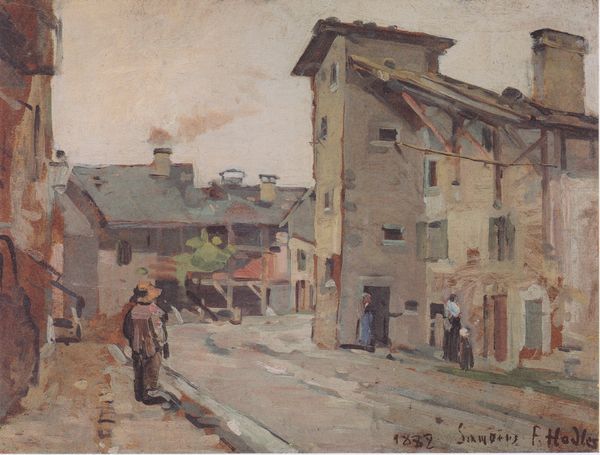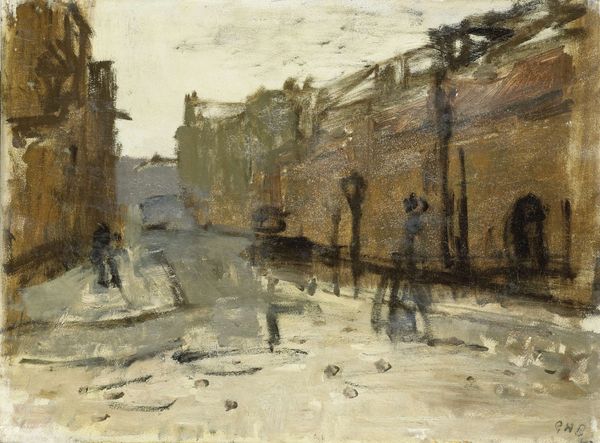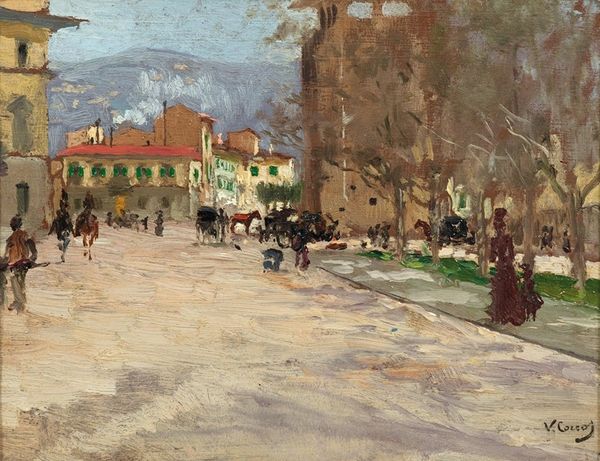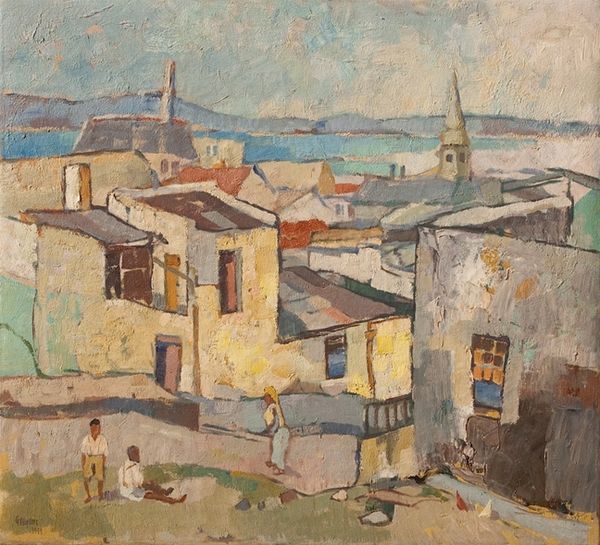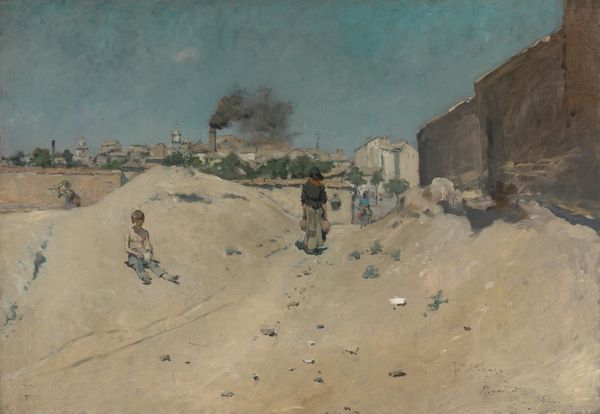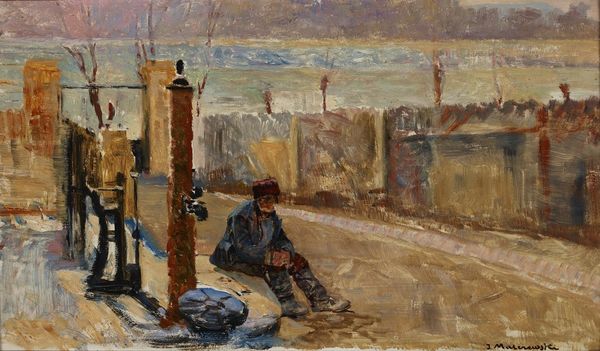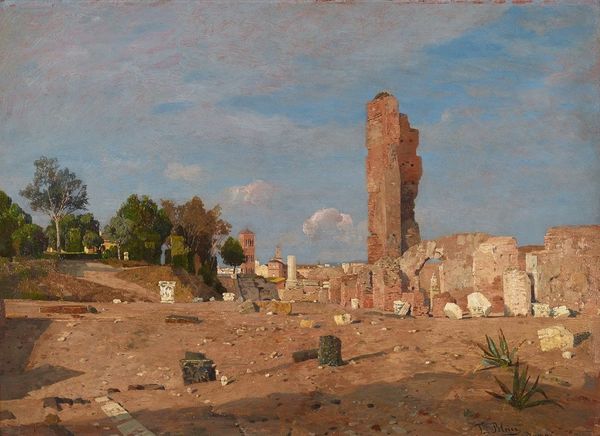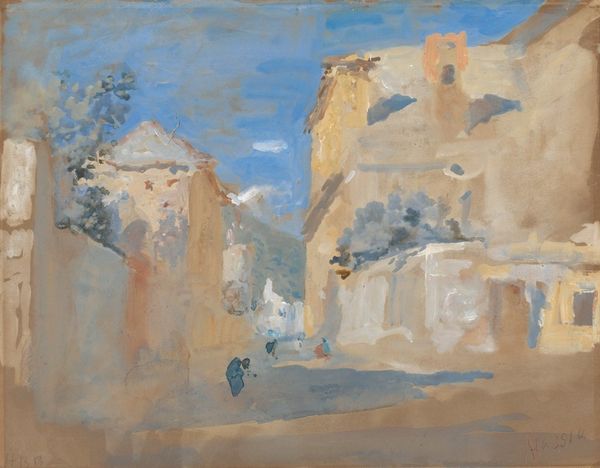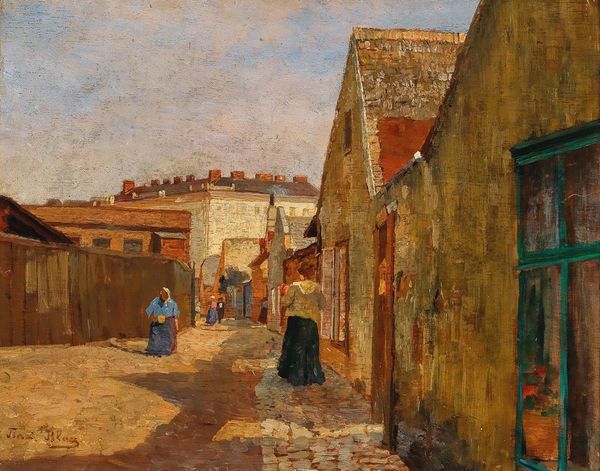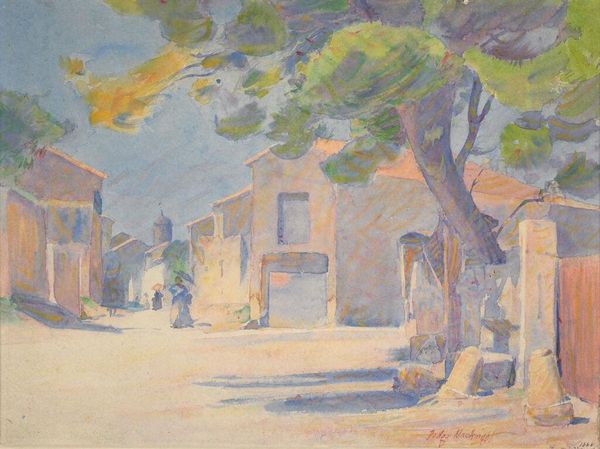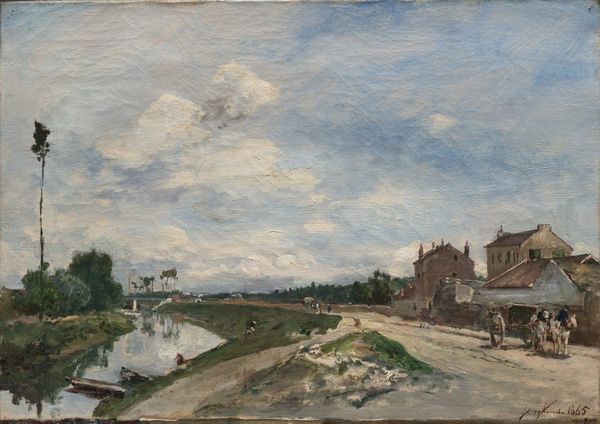
Copyright: Public Domain: Artvee
Editor: Here we have Tina Blau’s “Römisches Capriccio mit Titusbogen” from 1879, rendered in oil on panel, if I'm not mistaken. There’s almost a tension between the detailed architecture in the foreground and the blurrier triumphal arch further away, what jumps out at you in terms of interpreting this piece? Curator: I'm immediately drawn to the texture and materiality of the paint itself. Notice the impasto, particularly in the buildings. Blau wasn't just depicting Rome, she was actively constructing a representation through her application of oil paint, essentially turning material into form and even perceived social status and national identity through the labor required to bring supplies to Rome. Consider also that `plein-air` painting relies heavily on the accessibility of materials and safe methods of transport; what might the social structures around the creation of those raw pigments have looked like? Editor: That's a perspective I hadn't considered. So you’re saying it's not just a depiction of a place but an encapsulation of the means of production? The availability and manipulation of materials are the central subjects here? Curator: Exactly! It highlights how the accessibility and affordability of art materials shapes artistic practice and visual culture. It’s an illusion created with real, tangible things affected by global movement and capitalism. Were the tools she used—brushes, canvas—commercially produced? This shapes our understanding, right down to the brushstrokes. How did the industrial revolution enable and transform painting practice for the late 19th century? Editor: I suppose I was so focused on the aesthetic, but that's fascinating. Thank you; that gives me a lot to think about. Curator: It challenges us to look beyond the surface and to analyze the systems that underpin the creation and consumption of art, ultimately reflecting broader social and economic structures. Food for thought!
Comments
No comments
Be the first to comment and join the conversation on the ultimate creative platform.
